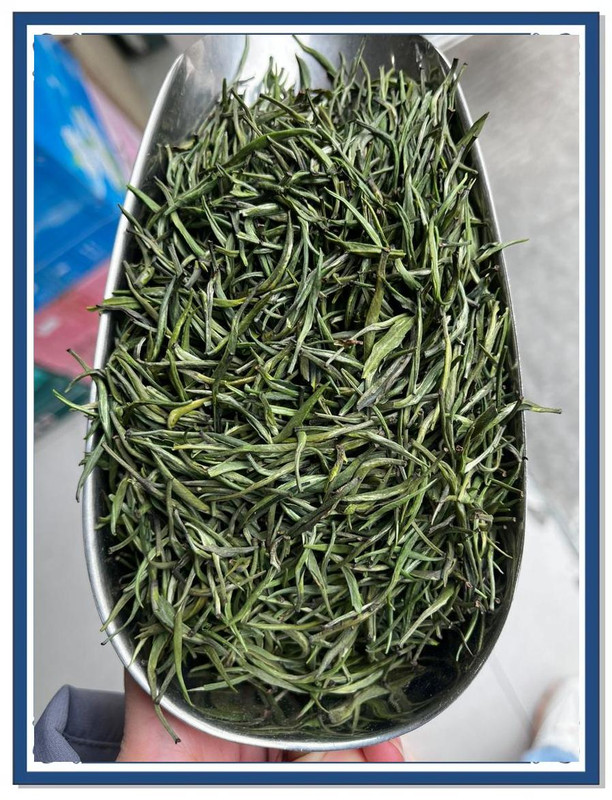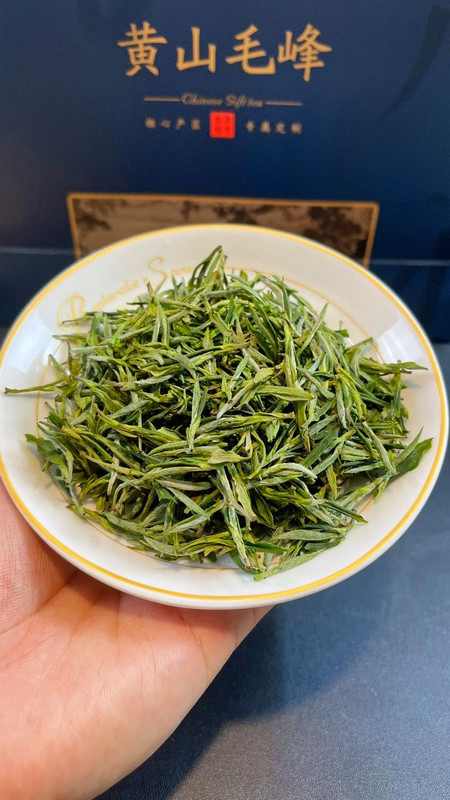Nestled in the mist-clad slopes of Mount Yi (黄山) in Anhui Province, China, emerges a tea that captures the essence of spring: 黟山雀舌 (Yīshān Quèshé), or “Sparrow’s Tongue of Yi Mountain.” This emerald-hued green tea, celebrated for its delicate flavor and meticulous craftsmanship, has been a hallmark of the region’s tea culture since its development in the late 20th century.

A Legacy Rooted in Nature
The story of Yishan Que She begins in 1979 when tea masters in Yi County, a historic tea-producing region known for its “Keemun Black Tea” and “Tunxi Green Tea,” sought to create a beverage that embodied the terroir of Mount Yi. Renamed from “Huangshan” in 747 CE, this sacred peak inspired the tea’s name, blending geography with poetic imagery. Today, Yishan Que She thrives in Yi County’s subtropical climate, where red laterite soils, 1,200 mm of annual rainfall, and fog-shrouded peaks yield leaves imbued with mineral richness and crisp freshness.
Artistry in Every Leaf
Yishan Que She’s creation is a four-hour dance of fire and finesse:
- Plucking: Only the tenderest buds and one leaf are hand-selected in early spring, with buds measuring 2.0–2.5 cm. Strict “Six No’s” rule excludes rain-damaged, purple, or insect-bitten leaves.
- Withering: Fresh leaves are spread on bamboo trays for 1–2 hours under natural sunlight to reduce moisture gently.
- Fixation (杀青): Leaves are stir-fried in woks at 110–130°C, using light, rhythmic motions to preserve emerald hues and grassy freshness.
- Shaping: High-velocity tossing in bamboo trays straightens buds into “sparrow’s tongue” shapes, with leaves partially enveloping the tip.
- Drying: Three stages of炭火烘焙 (charcoal roasting) at 60°C lock in aroma and reduce moisture to 5%.
- Sorting: Artisans handpick debris, ensuring only intact buds remain.
Aesthetic and Sensory Delight
The finished tea dazzles with its appearance: slender, jade-green strips adorned with silvery fuzz, resembling dew-kissed pine needles. Brewed at 85°C, it unfurls to reveal:
- Aroma: Fresh orchid and chestnut notes with a hint of seaweed.
- Liquor: Luminous yellow-green, crisp and viscous.
- Flavor: A symphony of sweetness and umami, balanced by a lingering chestnut finish.
- Leaves: Plump, emerald-green buds with intact silver tips.
Brewing Ritual
To honor its complexity:
- Use 3g of tea per 150ml glass or porcelain vessel.
- Pre-warm the pot with 85°C water, discard, then add leaves.
- Infuse for 30 seconds, adjusting for subsequent brews (total 3 infusions).
- Observe the “dancing needles”—leaves that stand erect before settling gracefully.
Authenticity and Grading
Genuine Yishan Que She is distinguished by:
- Appearance: Uniform, slender needles without broken tips.
- Color: Vibrant jade-green hue (not dull or yellowed).
- Aroma: Fresh, not grassy or stale.
Grading follows strict standards:
- Supreme Grade: Entirely composed of silvery buds (≥45,000 tips/kg).
- Special Grade: One bud with a tender leaf (≥25,000 tips/kg).
- Premium Grade: One bud with two leaves.
Prices range from ¥500–¥1,200/500g for supreme grades, reflecting its labor intensity and limited yield (≈30 tons annually).
Healthful Elixir
Rich in catechins (28–34%) and L-theanine, Yishan Que She offers:
- Antioxidant defense against free radicals.
- Metabolic support, aiding weight management.
- Mental clarity, with 25–35mg caffeine per cup.
- Oral health benefits, inhibiting plaque bacteria.
Legacy and Contemporary Reverence
Yishan Que She transcends its role as a beverage—it is a cultural artifact. The Yi County Tea Museum preserves 1980s processing tools, while annual “Sparrow’s Tongue Festivals” celebrate harvests with traditional folk performances. As climate-resilient cultivars emerge, this tea remains a testament to Anhui’s agrarian heritage, its needle-like leaves piercing through time to delight modern palates.
In every sip, one tastes not just tea, but the mist of Mount Yi, the patience of generations, and the enduring spirit of China’s tea masters.



